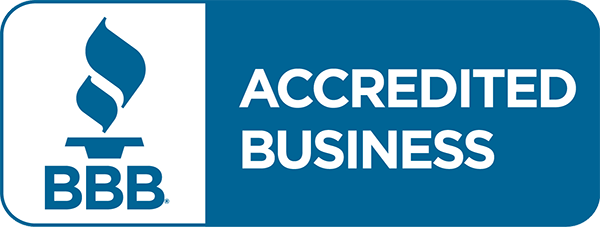How to Handle an Anxiety Attack

You’re just going through your regular daily routine when suddenly your breath catches and you feel your heartbeat increase. You feel a chill go down your spine, and your anxiety spikes dramatically. You feel like you’re choking, and potentially about to collapse. It may even feel like you’re dying – but you’ve actually just had an anxiety attack.
Anxiety has become the number one mental health issue in North America, with an estimated 18% of the adult population being affected by various anxiety disorders – ranging from generalized anxiety disorder (GAD) to phobias and panic attacks.
What is an Anxiety Attack?
Anxiety or panic attacks are defined as an abrupt onset of intense fear or discomfort that reaches a peak within minutes and includes at least four of the following symptoms:
- Sudden overwhelming fear
- Palpitations, pounding heart or accelerated heart rate
- Sweating
- Trembling and shaking
- Shortness of breath and/or sense of choking
- Chest pain
- Nausea and/or dizziness
- Derealization (feeling detached from the world) or depersonalization (feeling detached from one’s self)
- Fear of dying
- Chills or hot flushes
- Parenthesia (numbness or tingling sensations) in the limbs or entire body
Panic attacks can last anywhere from 5 – 30 minutes, and can feel awful, intense and frightening.
Many people who suffer from the symptoms of a panic attack may not recognize what is going on. They may end up making several trips to the emergency room, convinced that they have some type of life-threatening issue – when in reality they are experiencing a real, treatable and highly-manageable disorder.
How to Handle an Anxiety Attack When it Happens
Research has found that almost everyone will experience an anxiety attack at least once during their life. For some people, unresolved anxiety may even develop into panic attack disorder (PAD), where the panic attacks become frequent and problematic to the point that they interfere with a normal lifestyle.
Here’s what you can do when you recognize the signs of an oncoming panic attack:

Make yourself breathe slowly and deeply while reminding yourself that the attack will pass, and panic attacks are not harmful (though they are scary and unpleasant!).
- Work through the Five Steps of AWARE
- Use the 5-4-3-2-1 grounding technique to calm yourself down
- Make yourself breathe slowly and deeply
- Remind yourself that the attack will pass, and panic attacks are not harmful (though they are scary and unpleasant!)
- Stop and think – organize your racing thoughts and do what you need to do to get calm again
- Think positively – push negative thoughts out of your mind and remind yourself that you are in control
- Don’t be afraid to ask for help or walk away from a stressful situation
Ways to Cope with Anxiety Attacks
Martin N. Seif, PhD, a clinical psychologist in New York City and Greenwich, Connecticut, says that people who experience panic attacks have to learn how to cope with their feelings of panic.
By learning how to control your anxiety, it’s possible to calm your mind and body until the symptoms fade, and even stave off future attacks.
Try these simple tips to help you gain control of your panic disorder and curb anxiety attacks:

Nested Naturals Mood Lift uses a blend of micronutrients to help your brain naturally produce more of what it needs to strike a happy, calm balance. The 5-HTP and L-Methionine work together to increase serotonin levels, B Vitamins help boost energy and balance brain chemistry and Magnesium calms the body and mind.
1. Learn anxiety management techniques
Anxiety attacks are your body’s physical response to anxiety and stress. By learning how to reduce the stress in your life, you’ll be less likely to suffer from panic attacks. Some anxiety management techniques you can practice include focused breathing exercises, yoga, progressive relaxation and meditation.
2. Challenge negative thoughts
Ask yourself: Is this a productive thought? Is it helping me get closer to my goals?
If it’s just another negative thought that you’re rehashing, then you need to tell it to stop.
Practice telling yourself: “I may not like this situation, but I will do what I can and move forward. This is only how I feel at this moment, but it won’t last forever.”
3. Exercise!
Regular exercise is a great way to help reduce your stress levels and manage your anxiety. You may also find that going for a walk or run will help you get some time to yourself where you can think things over and work through your problems.
4. Take a natural Mood Lift supplement
Anxiety can sometimes be caused by certain vitamin deficiencies in your body, especially if you’re not maintaining a balanced and healthy diet. Nested Naturals Mood Lift uses a blend of micronutrients to help your brain naturally produce more of what it needs to strike a happy, calm balance. 5-HTP and L-Methionine work together to increase serotonin levels, B Vitamins help boost energy and balance brain chemistry, and the Magnesium calms body and mind. These ingredients work together to help calm stressed nerves and rebuild positive energy.
Remember, You’ve Got This.

The best way for you to manage and prevent anxiety attacks from happening is to reduce your stress levels and take control of your stress response.
At the end of the day, there is no concrete “cure” for anxiety. The best way for you to manage and prevent anxiety attacks from happening is to reduce your stress levels and take control of your stress response. As you start taking steps to lessen your anxiety, you’ll likely find the severity and frequency of your panic attacks decreasing over time.
Knowledge is power: Once you know more about your anxiety and what causes your symptoms, you’ll be better equipped to deal with your panic attacks and hopefully stop them for good.
Sources:
http://www.everydayhealth.com/anxiety/how-to-handle-panic-attacks.aspx
http://www.nhs.uk/Conditions/stress-anxiety-depression/pages/coping-with-panic-attacks.aspx
SaveSaveSaveSaveSaveSaveSaveSave




